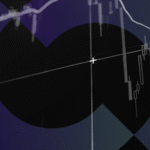Key Takeaways
- Venture firm a16z’s large COMP transfers, surging exchange inflows, and whale outflows signal mounting sell pressure. With weak user activity, COMP risks breaking below its $40 support zone.
Venture capital firm ai16Z [AI16Z] has transferred 800,000 Compound [COMP] tokens worth $34.59 million to Coinbase in just ten days, including a $16.26 million deposit made.
This sequence of high-volume deposits coincides with rising exchange inflows and renewed speculation around possible large-scale liquidation.
Historically, such wallet movements from institutional players have preceded periods of increased selling pressure.
With whales showing consistent distribution behavior, the market may soon face amplified volatility. Therefore, traders must weigh the potential impact of these deposits on COMP’s near-term price action.
Will COMP hold the $40 support zone or finally break lower?
At press time, COMP traded at $40.72, hovering near its demand zone after weeks of downward pressure. Despite the bearish environment, the Relative Strength Index (RSI) hovered around 38.60, signaling potential oversold conditions.
Historically, this zone has triggered relief rallies, but present conditions are different. With strong sell signals from whale activity and rising inflows, bulls lack a convincing catalyst.
Therefore, a decisive break below this zone could lead to steeper losses. However, any sign of reduced exchange activity or whale withdrawal might provide temporary support.


Source: TradingView
Why is exchange netflow surging by 318% this week?
Exchange Netflow for COMP surged +317.84% over the past day. This metric indicates that more tokens are moving into exchanges than out, which usually precedes or confirms a rise in selling pressure.
The timing coincides directly with ai16z’s transfers, strengthening the argument for intentional distribution. Consequently, this spike introduces substantial downside risk if market participants perceive it as front-running a broader selloff.
While inflow does not guarantee sales, the intent appears increasingly clear given volume dynamics and whale wallet behavior.
Can heating spot volume be trusted, or is it masking risk?
Spot Volume has entered a “heating” phase, reflecting aggressive trading activity across exchanges. While volume upticks can indicate growing interest, the context here matters.
Rather than stemming from fresh accumulation, this activity appears driven by short-term speculation and profit-taking.
When combined with elevated exchange inflows, such volume increases often result in sharp price swings. Therefore, traders must interpret this data cautiously, especially with no corresponding rise in network participation.
Are whales exiting? Netflows from large holders soar 611%
Large holder netflows have increased by +611.04% over the past seven days, confirming sustained outflows from major COMP wallets.
This trend strongly aligns with exchange inflow data and signals a short-term bearish bias among influential market participants.
Historically, large holders tend to distribute gradually before broader corrections unfold. Therefore, this metric serves as a leading indicator of impending sell pressure.
As a result, the behavior of whales this week has become a critical focus point for traders looking to manage risk exposure in the near term.
Besides, the new address growth climbed +7.41% this week, suggesting some degree of new wallet creation. However, Active Address count declined by 1.04%, implying limited user participation despite new entrants.
This disconnect reveals a lack of conviction and highlights weak organic demand. While a rise in new addresses often precedes recovery phases, falling activity tells a different story.
Can COMP survive the sell pressure brewing beneath the surface?
The recent COMP deposits by ai16z, combined with rising Exchange Netflows and large holder outflows, suggest increasing sell-side pressure.
Although the price is still holding near the $40 demand zone, there is little support from on-chain activity or user engagement.
Unless whale outflows slow and active participation improves, the likelihood of a sustained recovery remains low.
Market participants should monitor these metrics closely before anticipating any upside.










